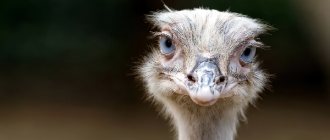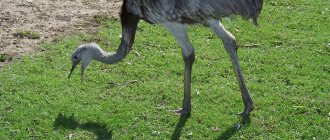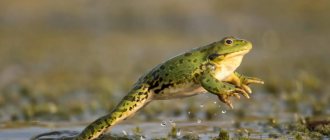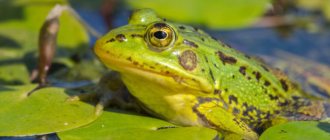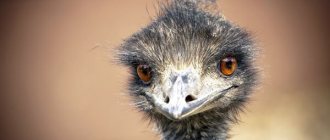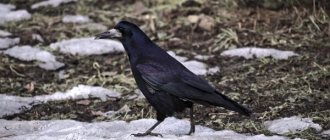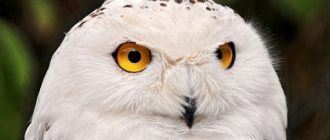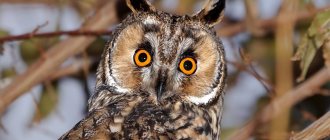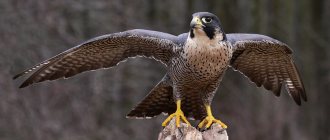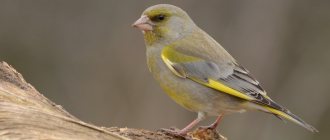Home » Articles about ostriches » How much does an ostrich weigh?
Ostriches belong to the category of flightless birds. They live in the wild and are raised on farms. How much an ostrich weighs depends on the species, gender, age, living conditions and other factors.
Description of the African ostrich
The African ostrich is an unusually large bird that cannot fly and has no keel. The only species of ostrich that has survived to this day.
Origin
Scientists have found that the most ancient ancestor of these birds lived in South Africa about 23 million years ago. It was medium in size (smaller than now) and primitive. About 15 million years ago, some of the ostriches entered Turkey, and from there they spread throughout inner Asia.
Further evolution of these birds took place in Eurasia during the late Miocene. The climatic conditions were as follows: cooling, drying out of the territory. But savannas spread over the spacious fields, where these ostriches lived in a rather underdeveloped and primitive form for a long time.
Appearance
The African ostrich is the largest of all bird species currently known to scientists. Let's take a closer look at every detail of his appearance:
- Head. Quite small, flattened. The eyes are large, bright, usually with long thick eyelashes located on the upper eyelid, but none on the lower eyelid. Vision is very good. The hearing aid is clearly visible due to the weak feathering in the head area; the auricles resemble small human ears.
- Wings. Underdeveloped, they have fingers with claws. The plumage is evenly distributed throughout the body and is dense on the wings. Typically, males have black plumage, and females, which are noticeably smaller, are not so brightly colored - gray, off-white.
- Limbs. The feet of the African ostrich are completely without feathers, as is the chest. Strong, long limbs have 2 fingers, one of which has a kind of hoof. Their legs are so powerful that with one blow an ostrich can cause serious damage and even kill any large predator.
- Height and weight. These are the largest and heaviest birds in the world. Their height reaches 2.5 meters, and their weight is approximately 120 kg for the female and 150 kg for the male.
The ostrich has an incredibly long neck that stretches well, allowing it to swallow large prey whole.
Lifestyle and behavior
Ostriches can behave aggressively towards humans if they attack their territory. These cases are a rare occurrence, but nevertheless, this characterizes them as freedom-loving and wayward birds.
They prefer to lead a herd lifestyle. They can live in family groups, which consist of a male, several females and their offspring. The flock numbers up to 30 individuals, and young ostriches in the south live in a group of hundreds of birds.
African ostriches can often be around other herbivores, live together and be very friendly. Due to their tall stature and excellent vision, they can report danger to all animals nearby.
Hibernation
African ostriches are able to withstand winter well in the central zone of the CIS countries, which is due to their very lush plumage and genetically excellent health.
When kept in captivity, specially adapted warm poultry houses are built for such birds. Individuals born in winter are much stronger and more resilient in health than birds born and raised in summer.
Origin and domestication of birds
Origin and domestication of the ostrich photo
The first ostrich farm was established in South Africa in 1838. The reason then was not so much the mass extermination of ostriches, but rather the interest in obtaining the valuable feathers of this bird. At that time, it was very fashionable to decorate clothes and hats with lush ostrich feathers. And the business of breeding ostriches was as profitable as gold mining. To get as many feathers as possible, farmers did not pluck them out, but carefully trimmed them, giving them the opportunity to grow back. From Africa, ostrich breeding spread to Europe, the USA, Australia, and South America. Statistics from 1913 indicate that about a million ostriches were raised on farms. In the twentieth century, ostrich farming fell into decline, but in recent decades it has regained popularity, this time thanks to the valuable dietary ostrich meat. Today there are about 600 ostrich farms in Europe. The birds are unpretentious, grow quickly, produce a lot of valuable products, so keeping them is a success.
Subspecies
To date, only 4 subspecies have survived that live in Africa. There used to be more of them, but due to the extermination of birds, their population has greatly decreased. Let's consider each subspecies separately:
- Common ostrich. The largest species. It has a bald spot on its head, and its paws and neck are colored pinkish-red. The female has whitish-pink skin instead of red. The egg of the common ostrich has star-shaped pores.
- Masai ostrich. Lives in East Africa. During the breeding season, its skin becomes bright red, the rest of the time it has a pinkish tint. Females have brownish-gray plumage and whitish limbs.
- Somali ostrich. Some scientists and researchers classify it as a separate species due to reproductive isolation revealed by DNA analysis. Female Somali ostriches are always larger than males. Their weight reaches 150 kg and their height is about 2.5 meters. The skin color of males is bluish-gray, while females have bright brown feathers.
- Southern ostrich. They are dirty gray and light black in color. The habitat is extensive: Namibia, Zambia, Angola.
General Features
Breeding ostriches on a farm can be profitable due to the following features of these birds:
- the tender lean meat of giants has a pleasant taste, contains virtually no cholesterol or fat, and does not become tough even after long heat treatment;
- Ostrich fat has medicinal properties, so it is used to make creams and ointments;
- soft, strong ostrich skin does not crack, does not become dry and hard; from one adult bird you can get up to 1.5 square meters. m of material for the production of bags, belts, shoes;
- Ostrich feathers are very beautiful, they are used for decoration, as well as for collecting dust from fragile parts and microcircuits in the electronics industry; You can get up to 2 kg of feathers from one bird;
- Giant eggs are quite large, their weight often exceeds 1 kg, in addition, they are healthier than chicken eggs due to the content of large amounts of vitamins and low cholesterol and unsaturated fatty acids.
In terms of keeping ostriches:
- unpretentious in care and nutrition (practically omnivorous and can do without water for some time);
- grow quickly;
- perfectly adapt to both hot (up to +56 °C) and cold climates (up to -16 °C);
- rarely get sick;
- live up to 70 years.
However, breeding this bird requires large expenses at the initial stage. Construction of a farm will require considerable investment.
In addition, the giants of the bird world love space - the minimum area of a closed room for 30 birds should be 150 square meters. m, open enclosures - 1.5 thousand square meters. m.
Natural habitats
Depending on the subspecies, the place of residence of the African ostrich varies. Most often, birds try to find the following natural conditions for life:
- Savannah. Ostriches, due to their natural characteristics and the need to quickly move, prefer grassy savannas and places with few trees. The plain is an excellent place for procreation and nutrition. On flat lands, you can clearly see all the animals nearby, including predators. Therefore, in case of danger, ostriches can flee in advance.
- Semi-desert. Groups of African ostriches can be found there while hatching eggs. However, they do not live in the Sahara Desert. Because it is difficult for birds to run on this kind of sand, which is necessary for them. The best option for life would be a semi-desert with hard soil and small bushes.
There are areas that ostriches try to avoid - these are mainly swampy areas, high impenetrable thickets of grass and trees, deserts with shifting sands.
Do ostriches bury their heads in the sand?
There is a misconception that ostriches bury their heads in the sand, but they do nothing of the sort. The appearance of this myth was facilitated by the manner of birds standing with their heads bowed to the ground and swallowing small pebbles that promote digestion.
An ostrich can also drop its head on the sand after a long run. The bird has no strength left, and thus it rests.
Taken from: theiwrc.org
Natural enemies
Ostriches have many different enemies in nature. Let's take a closer look at how serious and frequent the danger they pose:
- Predators. These are hyenas, jackals and birds that attack and destroy their nests with defenseless chicks. That is why during the period of incubation and growth of chicks, the population of African ostriches suffers enormous damage. But the offspring can run away from danger as early as 30 days after birth. Adults are attacked only by large predators: lions, tigers, leopards, cheetahs. But ostriches have effective methods of defense, so predatory animals attack with caution.
- Poachers. They are the ones who bear the most irreparable damage to the population. Hunters kill entire herds, about 30-80 individuals. They illegally sell skin, feathers, meat, and eggs of ostriches. There is currently only one method of combating poachers - breeding individuals on a farm in order to receive all the benefits from specially raised livestock, and not from killing all the birds.
- Tourists. For them it is just entertainment, so they enjoy hunting birds from helicopters. It is difficult to fight them and the authorities have banned the export of any type of ostrich products from the country.
Humans pose the greatest threat to African ostriches. Despite the camouflage, high speed, strong limbs and density of eggs, people have found a way to exterminate individuals for their own benefit.
Ostrich and man
People actively breed ostriches on farms. The meat of these birds is of high value because it contains little cholesterol. Ostrich eggs are also delicious. People also use the skin and feathers of these birds.
An ostrich eats berries.
In the wild, these large birds are afraid of people and flee when they approach. If an ostrich is driven into a corner, it will aggressively defend itself. An ostrich can easily kill a person with a kick. In South Africa, several people die every year from ostrich attacks.
People use domesticated ostriches for entertainment, for example, they ride them like horses. There are even special saddles for riding ostriches. But controlling these birds is much more difficult than controlling horses.
People also practice racing between ostriches. The birds are harnessed to special strollers and running competitions are held. Such spectacles exist in many US states where ostriches are bred on farms. The first ostrich farm appeared in 1892 in Florida. These feathered giants were brought to Australia, some of which escaped and wild flocks formed. In our country they are also trying to breed ostriches.
If you find an error, please select a piece of text and press Ctrl+Enter.
African ostrich nutrition
Ostriches have a varied diet. They can eat grass, branches, roots, plants and flowers. But they will not refuse small rodents, leftover food from predators, and insects.
Since birds do not have teeth, they swallow small stones so that the food is better crushed in the stomach.
These birds can remain without water for a long time, and they obtain moisture from plants. However, when they find a body of water, they use its capabilities and not only drink, but also swim.
Somali gorayo
The East African state of Somalia has its own species of ostrich, which is a subspecies of the African one. The female gorayo has brighter brown plumage, unlike other species. The birds' head, neck and thighs are not feathered, like their fellow birds. Long eyelashes, huge eyes and a straight, flat beak are the hallmarks of the Gorayo.
Males and females hatch their chicks in pairs: females during the day and males at night. Newborn birds weigh 1 - 1.3 kg, and grow very quickly. During the season, ostriches increase their weight to 18 - 20 kg. Adults reach their maximum weight after the fourth year of keeping. The height of an ostrich after 3 years is 250 cm, and its weight ranges from 100 to 170 kg, with females being much more massive than males.
They feed on a wide range of plants, and they eat not only grass, but also shrubs and leaves. However, they feast on small rodents and insects with equal pleasure. In the absence of food, an ostrich can live without water and food for up to two days.
Gorayo's average weight is 170 kg
Reproduction and lifespan
Before laying eggs, the male digs a hole himself. The main female of the flock incubates all the eggs for about 40 days. She does this all day long, leaving only to eat and chase small rodents. At night the male sits on the eggs.
One female can lay up to 10 eggs. The ostrich egg is the largest in the world. Its weight is 1.5-2 kg, and it is about 15 cm in length.
After 40 days, the chick hatches. This process takes about an hour. It breaks the shell with its beak and head. If some of the chicks from the offspring fail to emerge, the female herself pecks at the egg. Ostrich chicks weigh 1 kg, immediately begin to see, and have fluff. By day 30 they can already run quite fast.
The weight of ostriches becomes about 25 kg within six months after birth. After 2 years, males are covered with black feathers, before that they all look like females. Their development as a whole is characterized by a gradual and slow process. It takes a particularly long time for them to develop their plumage.
The maximum lifespan of an ostrich is about 80 years, but most of them live 35-40.
Australian emus
The height of the Australian flightless bird is 1 meter 50 centimeters, and the weight of the ostrich reaches 55 kg. Males have greater mass than females and can reach 100 kg. During egg laying, the male loses a third of his weight, because he is the one who incubates the chicks. The mother is getting food at this time.
Emus live in grassy and bushy areas and feed on pasture and insects. They enjoy eating cereal plants, so Australian authorities have decided to partially shoot ostriches if they cause harm to agriculture.
You can recognize an emu by its plumage, which contains all shades of brown. The head and neck have deeper dark colors, gradually becoming lighter at the bottom of the body. Emu has three toes on its feet, which are used for protection. The male and female look the same. You can distinguish them by raising the tail and pressing the cloaca. If the genital organ appears, it means there is a “boy” in front of you. Otherwise, you've looked under the lady's tail. However, not everyone will dare to take such peeks - an ostrich can easily kill a person with one kick. Thanks to their strong lower limbs, emus run at speeds of up to 51 km/h and are excellent swimmers.
Newborn chicks of the Australian flightless bird are very tiny - up to 400 g. The clutch includes up to 25 eggs, which means more than two dozen babies hatch at a time. The weight of one egg is 700 - 900 g, which corresponds to 10 - 12 chicken eggs in weight and volume.
The ostrich is an ancient animal. However, at some stage his mental development stalled. The tiny head contains an equally tiny brain. Ostriches are very shy and are afraid even of their own shadow, and as food they can easily feast on bottle caps or anything that fits in their beak.
Emu birds, weighing 160 kg
Domestication of the African ostrich
It is reliably known that attempts to domesticate the African ostrich occurred in the distant past in Ancient Egypt. However, only in the 19th century the first farm opened, which was located in America. After this, there were a lot of ostrich farms almost all over the world. Now they are bred in more than 50 countries around the world.
Birds are able to quickly adapt to harsh weather conditions, despite their African origin. It is not difficult for them to endure 30 degree frost, but sudden changes in temperature, drafts and wet snow have a particularly bad effect on birds, because of this they can get sick and even die.
How many kg can an ostrich egg hold?
An ostrich egg has an incredibly strong shell that can withstand a load of about 50 kg.
Interesting materials:
How long is a child’s registration certificate valid? How long is a certificate from a narcologist valid? How long is maternity leave in Turkey? How long does it take to obtain a police clearance certificate? How much money do they give for the first child in St. Petersburg? How much money is on a children's world gift card? How much money does one view on YouTube make? How many deputies are there in the State Duma 2022? How long does a children's watch hold a charge? How long does Apple Watch 5 last to charge?
Is it possible to breed it?
The ostrich is a large and exotic bird, but hardy and omnivorous. In order for a bird to live comfortably on a farm, the following conditions must be met:
- there should be a spacious grassy area nearby on which various plants will grow;
- the presence of an insulated poultry house, since ostriches love warm climatic conditions, even despite their endurance;
- For one male you need to keep 3-4 females, this ensures their proper reproduction.
It is important to handle birds carefully and carefully, because they can behave very aggressively during mating periods, protecting their chicks and eggs.
You can learn about breeding African ostriches in the video:
How do ostriches breed?
During the mating season, male ostriches surround themselves with a “harem” of 2 to 4 females. But before collecting so many “brides,” the males have to attract their attention: they change the color of their plumage to a brighter one and begin to make loud sounds.
All fertilized females of the “mini-harem” lay eggs in a common nest. However, the hatching of the clutch is carried out by the male with the (one) female he has chosen. Ostrich eggs are very large, with a strong shell.
The chicks that are born already have vision and are able to move. At birth, their weight is just over one kilogram. The very next day after hatching from the egg, the babies go to get food for themselves together with the adult male (father). The lifespan of ostriches is about 75 years!
Cassowary muruka
Species protection
The ostrich needed radical and serious security measures. An organization that protects the Sahara decided to call on people to help save the population and return the ostrich to the wild. Today, the Sahara Fund has already achieved considerable success in protecting the African ostrich.
The company assisted in taking some important measures in the construction of nurseries and consulted with experts on the topic of poultry breeding in captivity. Great assistance was provided to one of the zoos in breeding ostriches.
A nursery has been created in an African village with all the necessary conditions for ostriches in the east. The support of the authorities helped bring a flock of birds to protected areas and release them into nature reserves to continue living in their natural habitat, in freedom.
Thanks to the measures taken to protect the bird, it is possible to avoid the rapid development of poaching and preserve the population.
The ostrich is a unique bird of its kind. It has a long history, is well suited for farming and does not require special living conditions. Many farmers are happy with the decision to start breeding ostriches, as they receive quite a lot of benefits from them.
0
0
Copy link
How much does an ostrich weigh?
It is impossible to answer this question unequivocally, since the weight of the bird very much depends on the breed and age. Individuals of some breeds can gain weight up to 250 kilograms or even a little more - this is the largest weight found among birds.
A distinctive feature of the bird is the unusually small brain of the ostrich - it weighs only 10 grams. Moreover, one eye weighs about 5 grams and is larger than the brain. In other words, both eyes weigh as much as the brains. And this - with an unusually huge weight and unusual proportions for birds. It is interesting that the brain is equally small in all breeds.
If we talk about the average weight of an adult bird, then we should consider the performance of several of the most popular species of ostriches. All of them are found in semi-desert areas and savannas of Africa and Australia and lead a similar lifestyle, but their weight can vary quite a lot.
